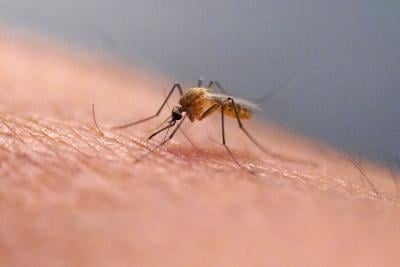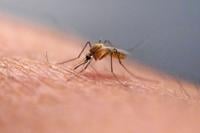A person living in the suburbs of New York City has tested positive for chikungunya, a mosquito-borne virus that is more often seen in South America and hasn't been transmitted on the U.S. mainland in a decade.
Health officials said the virus, which often causes fever and joint pain, was identified in a patient on Long Island who started experiencing symptoms in August after having traveled outside of the region, but not out of the country.
The patient likely got the virus from a mosquito bite, but it isn't clear where that happened. The virus has not been detected in local mosquito pools and isn't spread directly from one person to another.
Here's what to know about chikungunya:
What is chikungunya?
Chikungunya is a disease caused by a virus of the same name.
The chikungunya virus was first identified in people sickened during an outbreak in Tanzania in 1952. Its name is derived from a word in the Makonde language, which means “that which bends up,” due to the severe pain it can cause.
Chikungunya is transmitted by infected mosquitoes and mostly causes mild symptoms. The majority of people who get chikungunya recover without needing medical attention after one to two weeks.
What are the symptoms of chikungunya?
Chikungunya typically produces symptoms including fever, muscle pain, nausea, fatigue and a rash.
But in rare cases, it can cause debilitating joint pain that persists for months or even years. Patients who get severely ill often require hospitalization because of the risk of organ damage.
The World Health Organization says severe cases and deaths are rare and mostly occur in babies or elderly people with underlying health conditions.
Is there a treatment or vaccine?
There is no specific treatment for chikungunya, but health workers can treat the symptoms by giving medicines to lower fevers or ease muscle pain.
Two vaccines have been approved in several regions, including Britain, Brazil, Canada and Europe. Those are mostly targeted at travelers and are not widely available in the countries most affected by chikungunya.
Where does chikungunya normally occur?
Chikungunya causes regular outbreaks in Africa, Asia and the Americas, with occasional small epidemics in Europe.
As of August, there have been about 317,000 cases of chikungunya this year, including 135 deaths in 16 countries and territories, according to the European Centre for Disease Prevention and Control. The countries that reported the highest number of infections were Brazil, Bolivia, Argentina and Peru.
What's happening in the United States?
The case confirmed in New York was the first locally acquired instance in the United States since 2015, meaning the person was infected without traveling elsewhere. Ten years ago, one person was infected in Texas, according to the Centers for Disease Control and Prevention. Two cases were recorded in U.S. territories in 2019.
It's the first time that a locally acquired case has ever been detected in New York, the state Health Department said.
Health officials said the virus can be transmitted when a mosquito bites an infected traveler, becomes infected and bites another person.
The type of mosquito known to transmit chikungunya, the Aedes albopictus mosquito, is present in parts of downstate New York, and people should take care to avoid being bitten by wearing long sleeves and removing standing water from things like flowerpots, health officials said.
However, colder nighttime temperatures currently being recorded in New York make the transmission risk in the area "very low,” state Health Commissioner James McDonald said in a statement.
Although locally acquired cases have been virtually nonexistent in recent years, the CDC has tracked a number of travel-related infections in the U.S., including 199 in 2024 and 152 in 2023, according to agency data.
Are we seeing more chikungunya outbreaks?
Yes.
The number of outbreaks has increased since 2000, just as there have been more outbreaks of other mosquito-transmitted diseases like dengue and Zika, according to Robert Jones, an assistant professor at the London School of Hygiene and Tropical Medicine.
Jones said in a statement that in 2013, chikungunya was first seen in the island of St. Martin and that over the next three years, cases were confirmed in almost 50 countries in the Caribbean and the Americas, with more than 1 million suspected cases.
Jones said the risk of chikungunya epidemics has risen due to climate change and urban expansion.
The Associated Press Health and Science Department receives support from the Howard Hughes Medical Institute’s Department of Science Education and the Robert Wood Johnson Foundation. The AP is solely responsible for all content.



